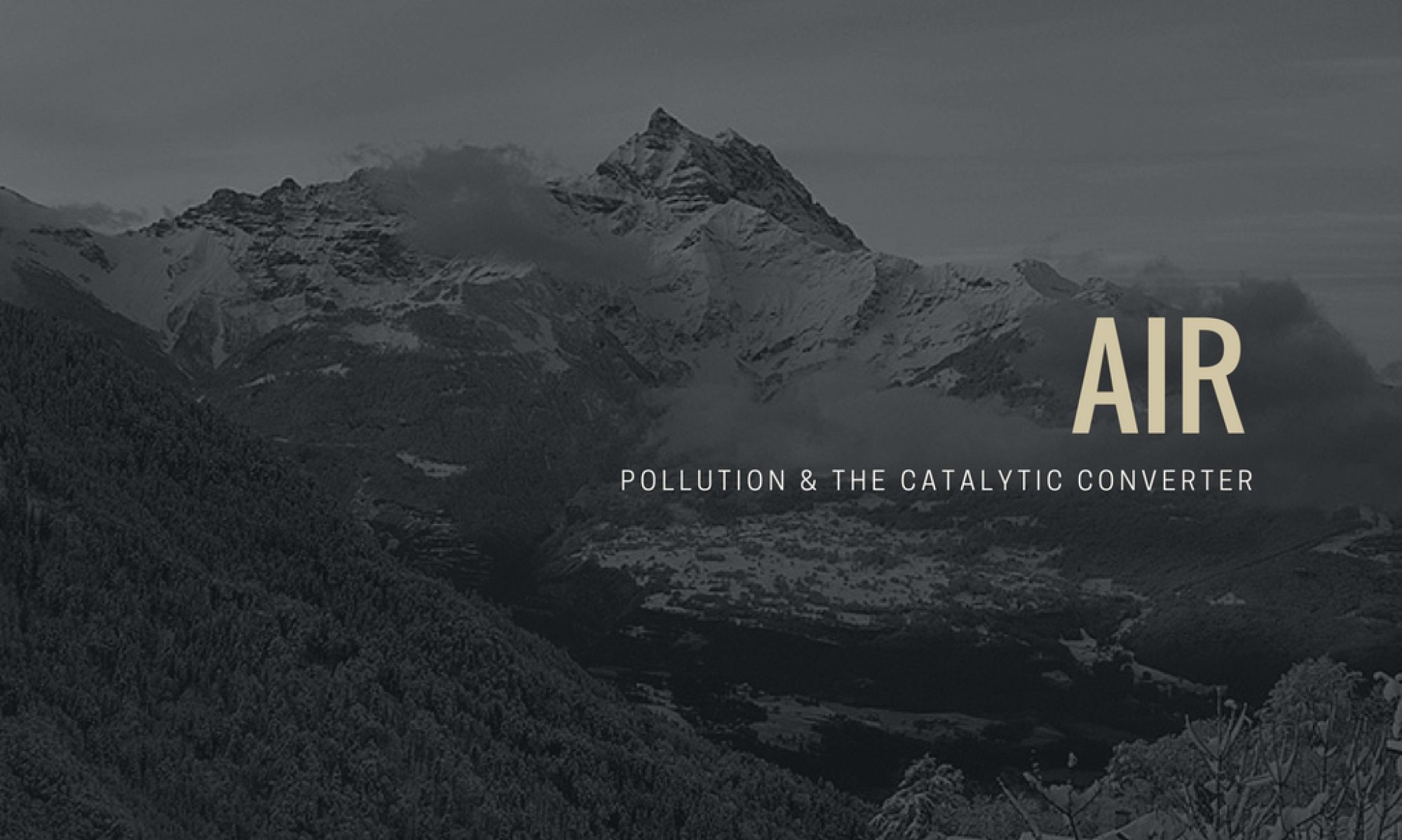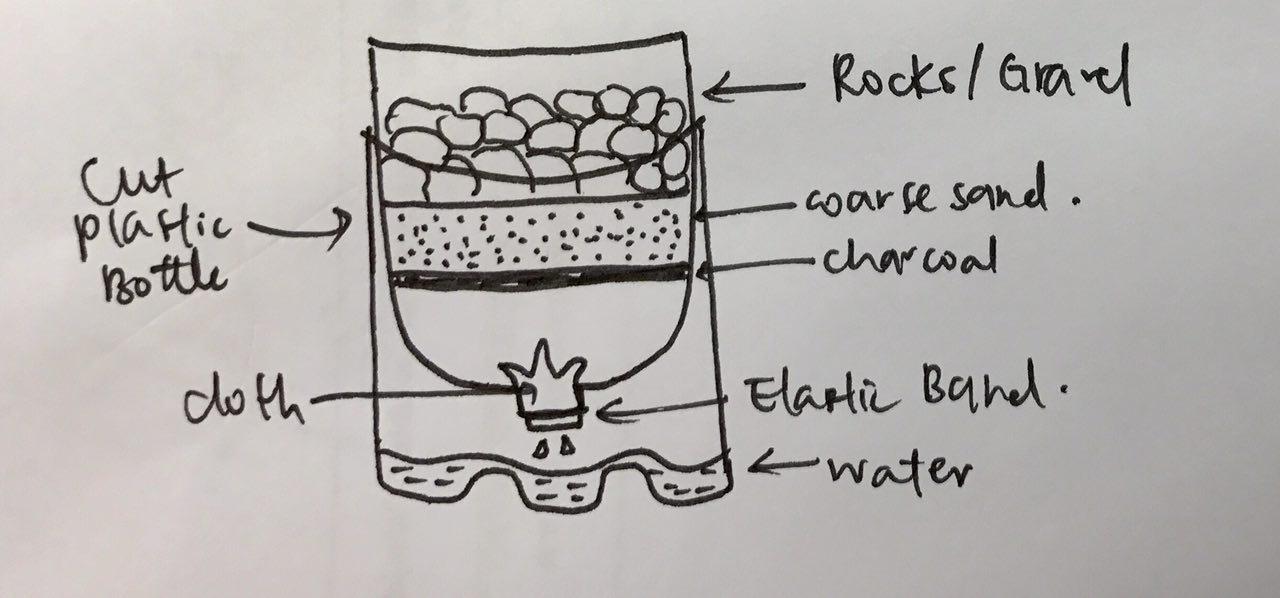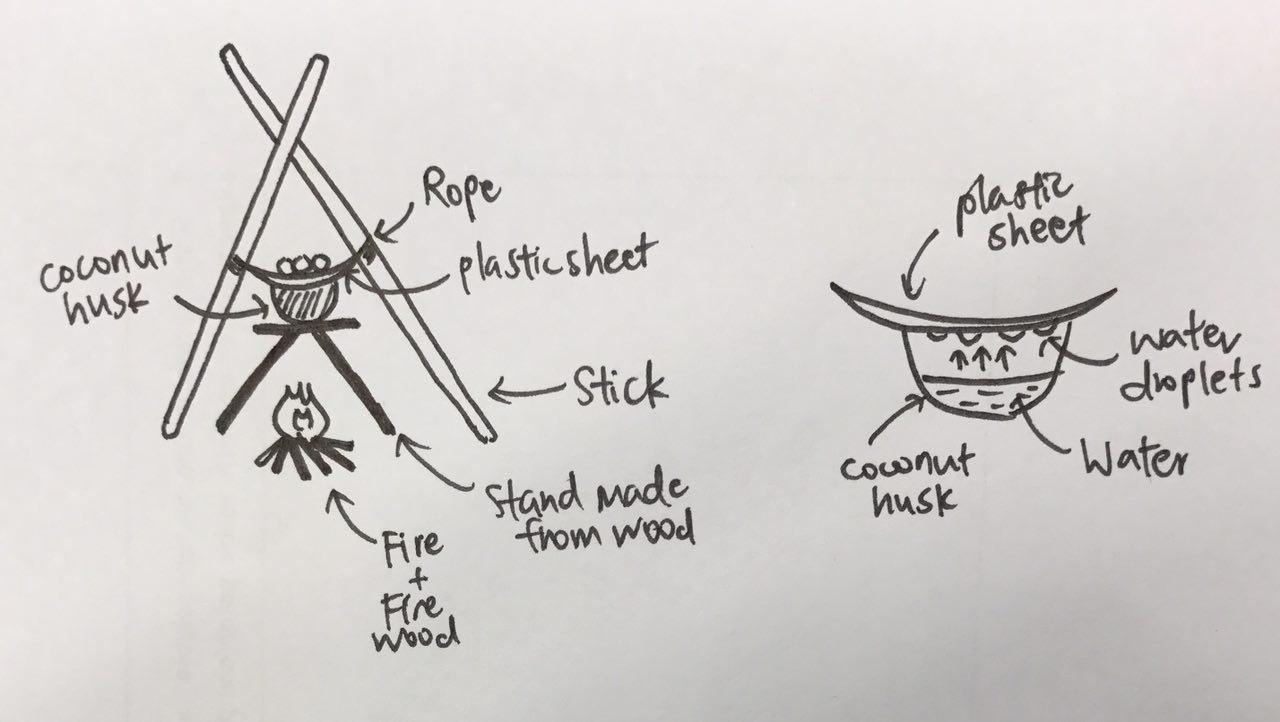- Method 1: Filtration using available materials around us (e.g gravel/rocks, coarse sand, charcoal, cloth and a plastic water bottle). set up the filtration as shown in the diagram below.
Method 2: Distillation. Set up distillation method as shown in the diagram below. Boil the water over a fire and collect the water droplets which condense on the plastic sheet. The water obtained is pure water.
Filtration is more cost and energy efficient whereas distillation is more energy consuming and non-economical. However, distillation produces water of higher purity.
Filtration is similar to the Microfiltration process in the purification process in NEWater. Distillation is similar to the desalination of sea water to obtain pure water.
2. Despite proven technological effectiveness, desalination techniques such as reverse osmosis and distillation are considered to be expensive and energy consuming, hence it is only practiced in richer countries.
3a. The likely major source of the lead in the drinking water maybe due to the corrosion of lead pipe, or solder from the drinking fountains and water tanks.
3b. Probably not, because all of the research activities conducted in the building usually have strict practice and proper waste disposal cans for the disposal of heavy metals, it is very unlikely that the research activities conducted contributes to the elevated lead levels in drinking water. However, human error may occur sometimes.
4. According to the “like dissolves like” assumption, we expect that the water-soluble vitamins are polar as they are soluble in polar solvents like water. On the other hand, the fat-soluble vitamins are non-polar as they are soluble in non-polar molecules like fats(hydrocarbon chains of fats are non-polar).




